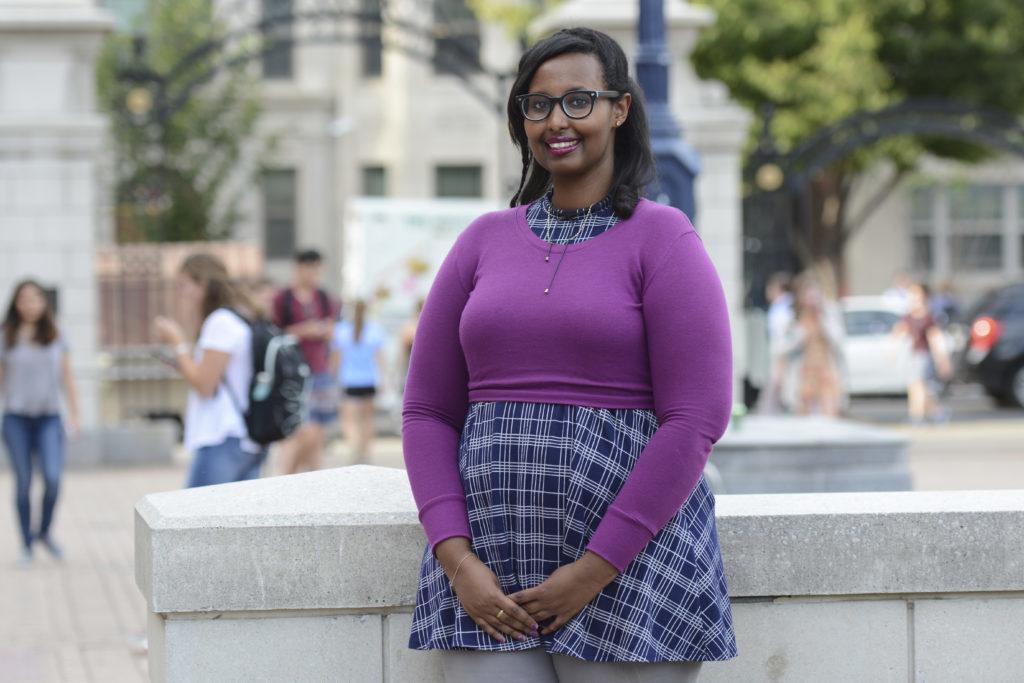The Student Association is trying out a new recruitment strategy to fill empty positions across the organization.
Instead of accepting vacancy applications throughout the fall, the SA is combining that process with its freshmen application period, hoping to fill 17 standing vacancies in the senate, executive cabinet and student court, Executive Vice President Sydney Nelson said. The SA is also holding several Welcome Week events and information sessions to advertise the vacant positions as leaders scramble to fully-staff the SA early in the academic year.
“By conducting the vacancy process at the same time for the freshmen seats, senate seats, cabinet vacancies and appointments, we are ensuring that the SA is able to better serve the student body earlier on in the school year,” Nelson said in an email.
The SA’s biggest hurdle will likely be filling 11 open senate seats. Eight of the unfilled spots are graduate seats, continuing a years-long trend of graduate student disinterest in the SA, a problem that former senators have tried – and mainly failed – to solve.
Although 15 senate seats had no candidates during elections last March, write-in candidates narrowed the body’s vacancies to eight. But two undergraduate senators transferred schools over the summer and one graduate senator resigned Monday, Nelson said.
She said that in addition to advertising open positions through email blasts and social media, the SA is also reaching out to students this year during Welcome Week with events like “Popsicles and Policy” and “Pizza with President Peak.”
“Our goal is to ensure that students are able to connect with the Student Association in whichever form is more convenient for them,” she said.
“We already have graduate and undergraduate students showing, applying to the vacancies so we think our approach is already proving effective.”
Increasing interaction during welcome week and combining the two recruitment processes is new for the SA, and leadership said they are actively seeking a “fresh start” after a scandal-plagued election season last spring. SA leadership will also host a vacancy information session Sept. 13 before their second senate meeting of the year – the first year that all vacancies are advertised together.
The SA will accept vacancy applications until Sept. 15 and conduct interviews that weekend, Nelson said.
“Normally, there isn’t this level of coordination between cabinet and senate vacancies,” she said.
Last year, the SA struggled to find the best process to select new members as it faced 12 vacancies, including 10 for graduate positions. In 2015, the senate looked to fill seven vacancies – four graduate and three undergraduate.
Sen. Brady Forrest, G-at-Large and president pro tempore of the Senate, said the new application process will make the SA “even more efficient and transparent,” and is helping to fill vacant seats earlier than in previous years.
“We already have graduate and undergraduate students showing, applying to the vacancies so we think our approach is already proving effective,” he said in an email.
He added that the SA is exploring new ways to improve graduate student outreach, like increasing recruitment during the election process and developing working relationships with graduate student organizations.
Sen. Lucia Mohamed, GSEHD-G, said it is often harder to recruit and retain graduate senators because they have less time to settle into GW.
“Graduate students also, as you may already know, are trying to balance their work life, academic studies and personal lives, so I think we’re trying our best to keep pace with life’s responsibilities,” she said in an email.
But Mohamed said the SA is trying to attract more graduate involvement, which may begin with graduate senators looking for candidates in their respective schools and programs.
“I didn’t personally know the previous senator in GSEHD, but I know that one of the goals I will pursue in my term is to actively form relationships with new students in my program and school who have interest in representing their cohorts in the Senate,” she said.
Nelson said the SA’s newly-created director of student engagement role will focus on graduate student recruitment in the future.
“Part of the role of director of student engagement is to help us educate students on how to get involved in the SA in the spring, working to ensure that students, especially graduate students, are better informed on how to run for office and apply for cabinet positions,” she said.
Monica Mercuri contributed reporting.





